Behind The Curtain
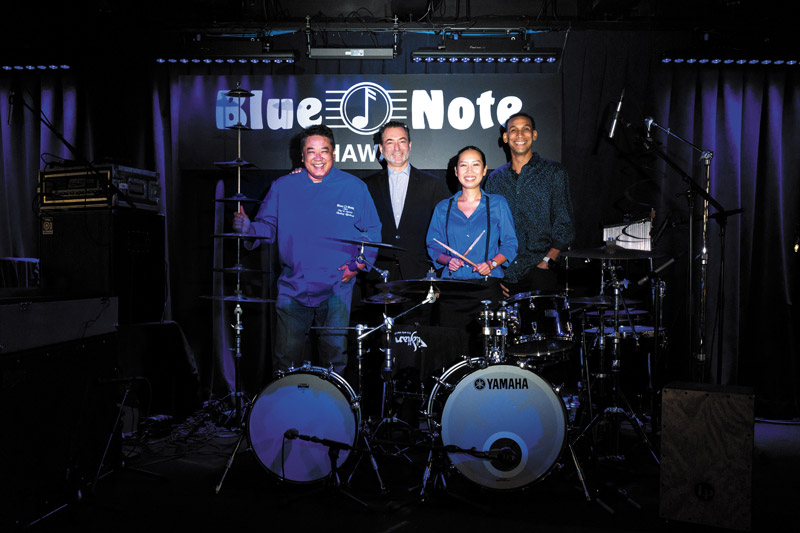
Executive chef Rodney Uyehara, general manager Marco Olivari, waitress Maya Yamada and production manager Chaz Dobbs keep the show going.
As Blue Note Hawaii celebrate its second anniversary this week, MidWeek goes behind the scenes to see what keeps this jazz club grooving.
Hawai‘i is infamous as something of a concert desert.
The biggest acts often bypass the islands for cheaper territories, and smaller acts sometimes stay away for fear of lack of interest.
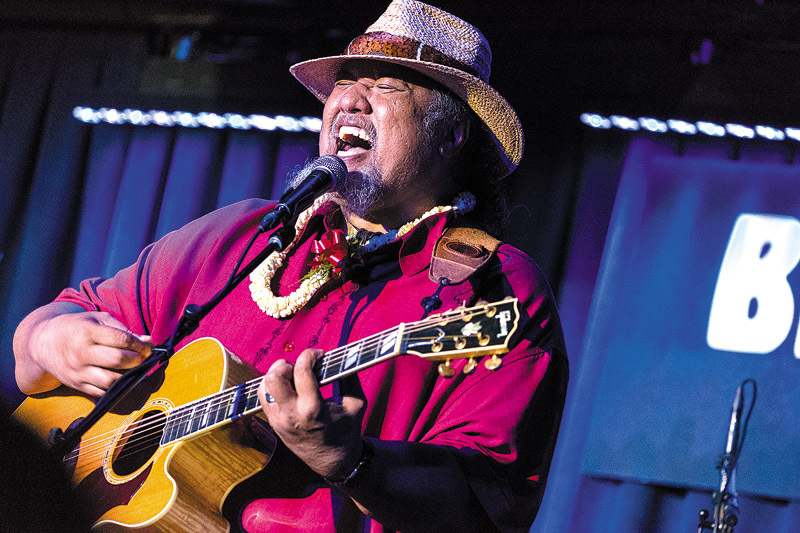
The January lineup at Blue Note Hawai‘i included the likes of (clockwise from top) Willie K, comedian Kevin Nealon, John Popper of Blues Traveler, Chris Botti, Kimie Miner and Lisa Fischer. February acts include Rick Springfield, Ginai, Chick Corea, Lee Ritenour and more. PHOTOS COURTESY BLUE NOTE HAWAI‘I
But two years ago, the world-famous Blue Note Jazz Club chain, known for its flagship venues in regions as varied as New York City, Tokyo, Milan and Beijing, saw an opportunity.
“We were looking for something to be a stopover as groups were going to and returning from Japan and Asia,” explains Marco Olivari, general manager of Blue Note Hawai‘i.
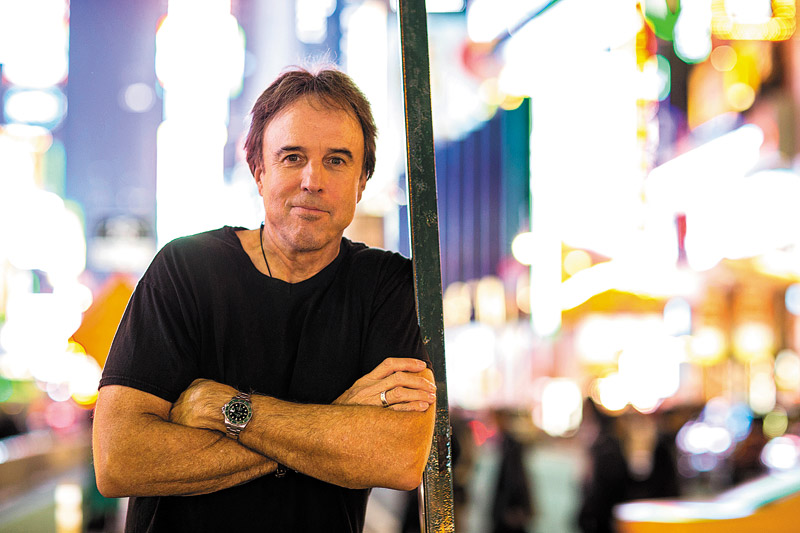
PHOTOS COURTESY BLUE NOTE HAWAI‘I
Hawai‘i, nestled in the middle of the Pacific Ocean, was finally the right place at the right time. Performers touring the Blue Note clubs can ease jetlag, enjoy a wonderful vacation, and spend three or four nights performing relaxed, intimate shows.
The truth is, it takes more than glamour, velvet and smoky vocals to make a jazz club work. It takes luck, hard work and a lot of practicality — and the staff of Blue Note Hawai‘i are happy to be the men and women behind the curtains that make sure the show goes on, every night.
The Venue
Blue Note Hawai‘i happened upon a little bit of serendipity when selecting its home at Outrigger Waikīkī Beach Resort’s former Society of Seven showroom.
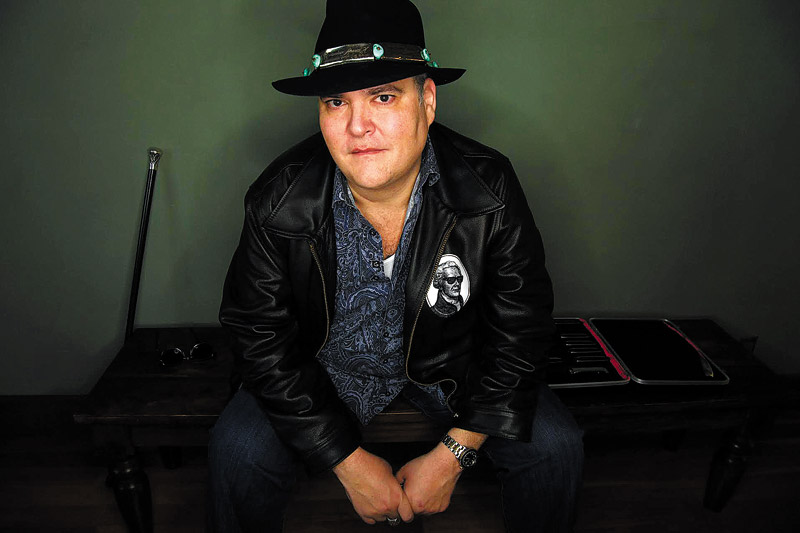
PHOTOS COURTESY BLUE NOTE HAWAI‘I
Throughout the ’50s, ’60s and ’70s, Vegas-style showrooms dominated Hawai‘i, Olivari explains. Entertainers like Don Ho, The Ali‘is and the aforementioned Society of Seven ruled the landscape with regular shows based in different hotels and clubs.
“After about 35 or 40 years of continuous shows, (this showroom) eventually closed,” Olivari says.
“The Outrigger is kind of like the bullseye of Waikīkī, where it’s dead center on the beach … right in the middle with a big, fat beautiful showroom sitting empty. That was a no-brainer, as far as that goes.”
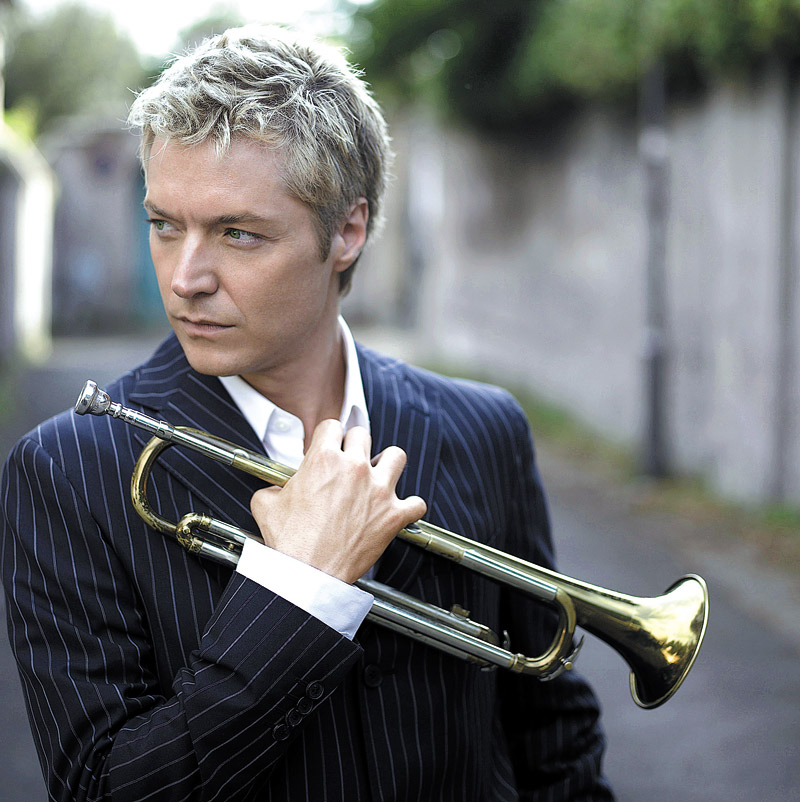
PHOTOS COURTESY BLUE NOTE HAWAI‘I
Other Blue Notes, he explains, had to repurpose restaurants or retail shops to build their clubs, taking rooms that weren’t meant for performances and renovating them.
Blue Note Hawai‘i didn’t have to worry about any of that.
“This is a beautiful room,” Olivari says. “Not a single column or obstruction of view. It’s set up to be a little more theatrical.”
Blue Note Hawai‘i seats 326 guests in table, booth and bar seatings.
“The intimacy — being able to reach out and touch the artist sitting in front of you — is a huge perk,” says Chaz Dobbs, production manager.
Dobbs isn’t exaggerating, either. The tiny space means that people with premium seats can literally touch the stage and get up close with the performers — but people in the back can still see just fine. There’re no craning necks from the rafters of the stadium in this joint. Everything is naturally angled towards the stage.
“You’re no more than maybe 20 yards from the artists,” Olivari promises.
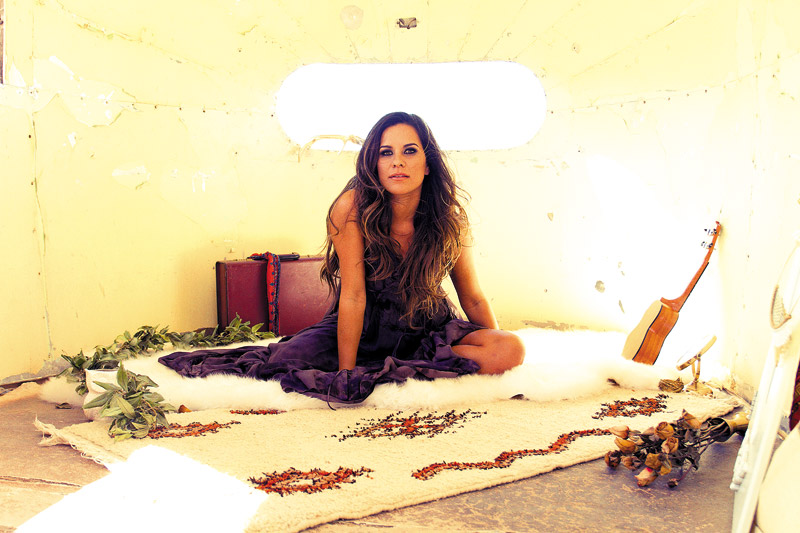
PHOTOS COURTESY BLUE NOTE HAWAI‘I
The Stars
As the name would suggest, Blue Note is known on the Mainland and abroad as jazz central. But things are a little different in Hawai‘i, at least in some ways.
“You don’t need to know who is performing,” says Steven Bensusan, president of Blue Note Entertainment Group. “You can just go, and you know the music is going to be great.”
Olivari says that Blue Note Hawai‘i has the traditional jazz that has made the Blue Note brand famous — past acts have included the likes of Chaka Khan, Kenny G and Chick Corea — as well as the biggest names in Hawaiian and reggae music, and stand-up comedy acts.
“I would have felt terrible if we reopened a historic Hawaiian showroom and never played a note of Hawaiian music,” Olivari says.
Jake Shimabukuro was the club’s first local headliner, and Willie K enjoys a monthly residency every last Tuesday. January also saw the likes of Robert Cazimero, Kimie Miner and Kuana Torres Kahele stop by.
It comes down to simple math, according to Olivari. In crowded New York City, the odds are strong that a club can find an audience devoted to pure jazz. Hawai‘i is much smaller, so diversifying just makes more sense.
“This is a real multi-genre venue,” Olivari says.
Of course, booking and serving such a multitude of talent in Hawai‘i has its challenges.
There are fewer distributors and vendors on island — whether they peddle forks, cups or new trumpet players — so there’s less improvisation allowed and more planning required.
And there are some things that are just out of your hands.
“In New York, we do a lot of big bands,” Olivari says. “If you want to do an 18-piece big band, you can find an 18-piece big band that all the musicians live in and around New York, whereas if you’re going to send an 18-piece big band to Hawai‘i, the expense of air travel, hotels and equipment is just too much.”
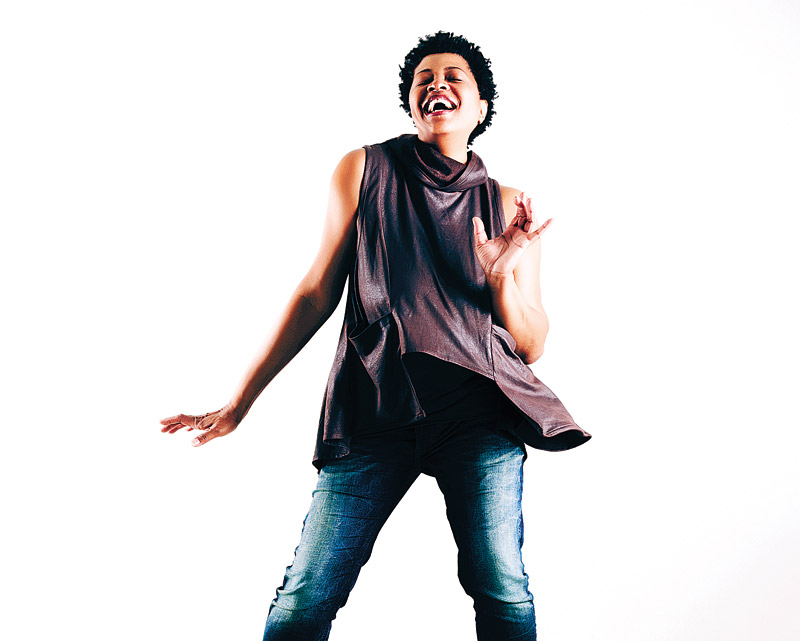
PHOTOS COURTESY BLUE NOTE HAWAI‘I
But none of these logistics mean a thing when it comes to helping performers have the best show they can.
“I have friends who work in the other Blue Notes,” Dobbs explains. “My goal is to give all the other Blue Notes a run for their money, to try to be as nice and cordial and helpful as possible because maybe 95 percent of the job is customer service.”
The Future
With two years under its belt, Blue Note is buckling down for the long term.
“We’re going to build some traditions,” Olivari declares.
Chris Botti is back to headline the club’s second anniversary, just as he led its first-year celebrations. Kenny G has come for two New Years in a row, with more hopefully to come. Olivari hopes to see people enjoy a show — and then buy their tickets for next year’s performance before they leave the room.
Bensusan, who personally books all the talent at Blue Note Hawai‘i from New York, envisions themed series.
“We’re starting … to continue to present the biggest names in jazz in terms of legendary status of jazz artists — not necessarily the most popular, but the legends of music who are still with us. We want to make sure they come and perform in that room.”
He cites performers like Freddy Cole, Christian Mc-Bride and more that he hopes will make their way to Hawai‘i.
Bensusan also sees a little bit more fusion in Blue Note Hawai‘i’s future.
“We’ll maybe try to do some collaborations this year between local and some national touring artists,” he teases.
Blue Note Hawai‘i’s two-year anniversary celebration continues nightly through Feb. 4, featuring trumpeter Chris Botti.
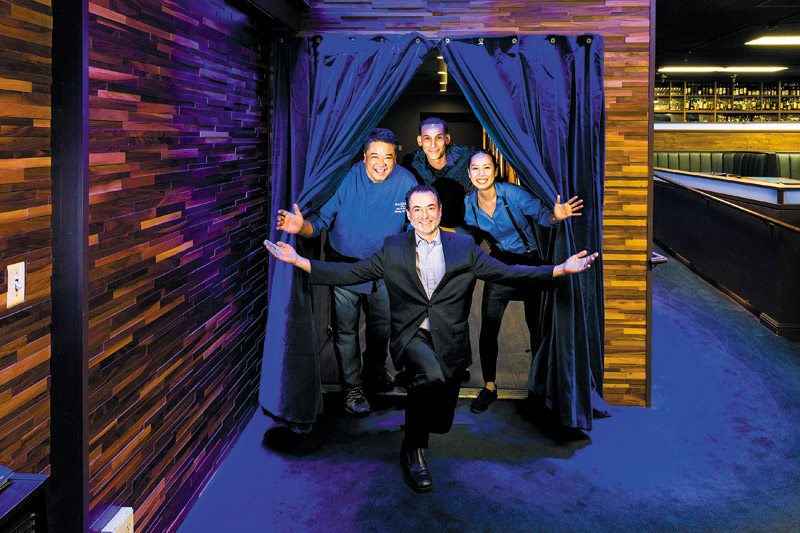
Executive chef Rodney Uyehara, general manager Marco Olivari, production manager Chaz Dobbs and waitress Maya Yamada
Showtimes are 6:30 and 9 p.m., with tickets running from $75 to $90. To purchase tickets, visit bluenotehawaii.com.
THE FOOD Concert venue food is usually an afterthought — maybe something you grab because you just happen to be hungry. But many of Blue Note’s seats require a $10 minimum food or beverage purchase.
So that’s where chef Rodney Uyehara comes in. “Service has to be executed really quickly. Entrees and appetizers have got to be served within 2 to 3 minutes,” he says.
Waitress Maya Yamada, who has been with Blue Note Hawai‘i from the beginning, agrees that things can be challenging.
“This is like an actual restaurant,” she a~ rms. “We have to be really strong physically and also have good communication with the customer.”
Waitstaff have to weave around tables without interrupting anyone’s view of the stage, take orders while the music is blasting and move as fast as possible.
“When service starts, it’s nonstop,” Uyehara says. “We got about fi ve runners going on a sold-out night, I got maybe six cooks in the kitchen putting out food. We probably serve about 350 people within one hour, so you can imagine it gets quite hectic in here sometimes.”
Still, the show goes on, and so does the kitchen.
Uyehara says his most popular menu items are his Braised Harris Ranch Beef Short Ribs, which come with crispy polenta and collared greens, and the Blue Note Burger.
Blue Note Hawai‘i is hoping to run more food specials this year. General manager Marco Olivari notes that the kitchen whips up loco moco whenever Willie K is in the house as a special, for example.
Uyehara says to expect spinach gnocchi with beef Bolognese sauce in March as part of the Localicious campaign.
“My job is great because I get to see free concerts every night while serving food to everybody,” he laughs.





